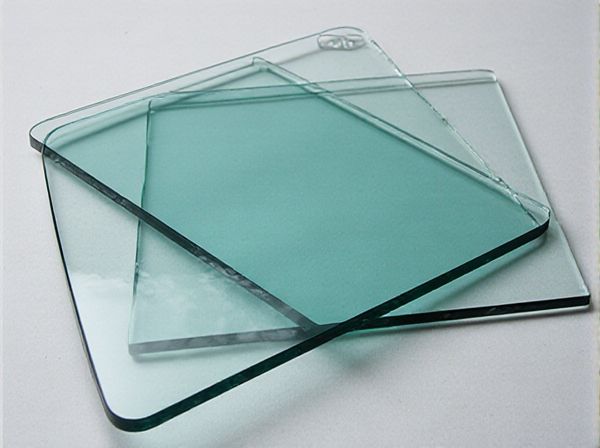
Photo illustration: Solar-Control Glass vs Standard Glass
Solar-control glass significantly reduces heat gain and glare by filtering out a large portion of solar radiation, enhancing comfort and energy efficiency in your space. Unlike standard glass, it helps maintain consistent indoor temperatures and lowers cooling costs, making it ideal for both residential and commercial buildings. Your investment in solar-control glass improves natural lighting while protecting interiors from UV damage.
Table of Comparison
| Feature | Solar-Control Glass | Standard Glass |
|---|---|---|
| Heat Reduction | Blocks up to 70% infrared heat | Minimal heat blocking |
| UV Protection | Up to 99% UV rays blocked | Less than 50% UV protection |
| Glare Reduction | Significantly reduces glare | No special glare reduction |
| Fuel Efficiency | Improves AC efficiency, saves fuel | No impact on fuel efficiency |
| Durability | Tempered and coated for strength | Standard tempered glass |
| Cost | Higher initial cost, long-term benefits | Lower upfront cost |
Introduction to Solar-Control Glass and Standard Glass
Solar-control glass incorporates special coatings or tints designed to reduce solar heat gain by reflecting and absorbing infrared radiation, improving energy efficiency in buildings. Standard glass typically lacks these properties, allowing more heat transmission and less effective insulation against solar radiation. The enhanced performance of solar-control glass contributes to lower cooling costs and increased occupant comfort compared to conventional glass.
Key Differences Between Solar-Control and Standard Glass
Solar-control glass significantly reduces heat transfer by reflecting and absorbing solar radiation, enhancing energy efficiency in buildings. Standard glass allows higher solar heat gain, leading to increased cooling costs and indoor temperature fluctuations. The key difference lies in solar-control glass's coating technology that blocks ultraviolet and infrared rays while maintaining visible light transmission.
How Solar-Control Glass Works
Solar-control glass incorporates a special coating or tint that selectively reflects and absorbs infrared radiation from sunlight, significantly reducing heat transmission while allowing visible light to pass through. This technology minimizes solar heat gain, enhancing indoor comfort and reducing energy consumption for cooling. Unlike standard glass, which typically transmits most of the solar heat, solar-control glass improves thermal efficiency by managing the solar spectrum more effectively.
Energy Efficiency: Solar-Control vs Standard Glass
Solar-control glass significantly enhances energy efficiency by reflecting and absorbing substantial amounts of solar radiation, reducing heat gain in buildings compared to standard glass. This reduction in heat gain lowers cooling demands and decreases reliance on air conditioning systems, leading to lower energy consumption and utility costs. Standard glass allows more solar heat to pass through, increasing indoor temperatures and energy used for climate control.
Thermal Comfort and Temperature Regulation
Solar-control glass significantly improves thermal comfort by reducing solar heat gain compared to standard glass, maintaining cooler indoor temperatures during hot weather. Its low-emissivity coatings and tinted layers reflect infrared radiation, minimizing heat transfer and reducing reliance on air conditioning systems. This temperature regulation enhances energy efficiency and ensures consistent indoor climate control throughout the year.
Impact on Natural Light and Glare Reduction
Solar-control glass significantly reduces glare by filtering harmful ultraviolet and infrared rays while allowing ample natural light to pass through, enhancing indoor comfort without compromising brightness. Standard glass transmits most light and UV radiation, often resulting in increased glare and heat buildup inside spaces. The advanced coating on solar-control glass optimizes daylight penetration and minimizes visual discomfort, making it ideal for energy-efficient and occupant-friendly buildings.
Cost Comparison: Installation and Long-Term Savings
Solar-control glass typically carries a higher upfront installation cost than standard glass due to advanced coatings that reflect infrared and ultraviolet light, reducing heat gain and glare. Despite the initial investment, solar-control glass offers significant long-term savings on energy bills by improving building insulation and reducing reliance on air conditioning. Over time, the energy efficiency and potential for lower HVAC maintenance costs make solar-control glass a cost-effective choice compared to standard glass.
Durability and Maintenance Considerations
Solar-control glass offers enhanced durability due to its specialized coatings that resist scratches, UV damage, and environmental wear better than standard glass. Maintenance requirements are reduced as solar-control glass minimizes dirt accumulation and resists fading, extending its lifespan and reducing cleaning frequency. Standard glass typically requires more frequent maintenance and replacement due to its susceptibility to damage and environmental degradation.
Applications: Where to Use Solar-Control or Standard Glass
Solar-control glass is ideal for commercial buildings, schools, and homes in hot climates where reducing heat gain and improving energy efficiency is critical. Standard glass suits applications in temperate climates, interior partitions, and decorative elements where thermal performance is less crucial. Choosing solar-control glass enhances comfort in sun-exposed facades, while standard glass remains cost-effective for areas with minimal solar exposure.
Choosing the Right Glass for Your Building Needs
Solar-control glass significantly reduces heat gain by reflecting a large portion of solar radiation, enhancing energy efficiency and indoor comfort compared to standard glass. Standard glass allows more solar heat to enter, often leading to increased cooling costs and glare within buildings. Selecting solar-control glass is ideal for climates with high sun exposure or structures prioritizing sustainability and occupant comfort.
 caratoz.com
caratoz.com